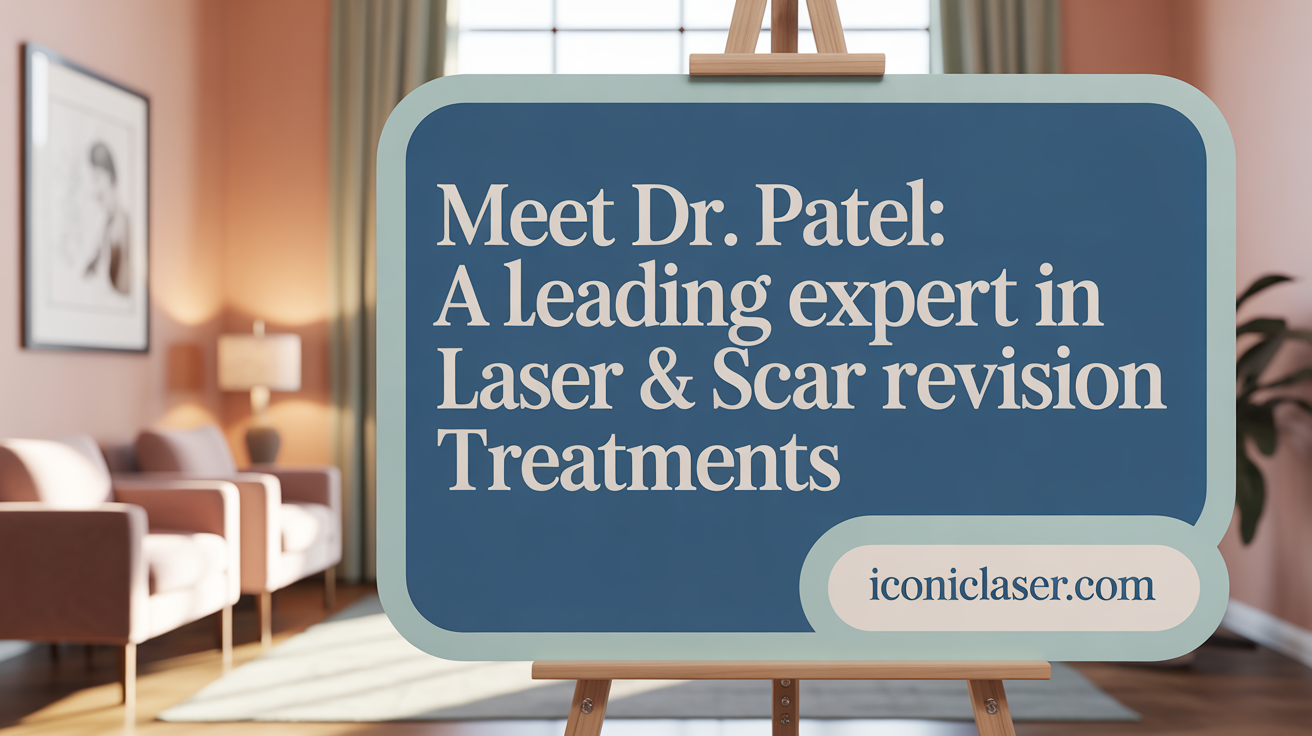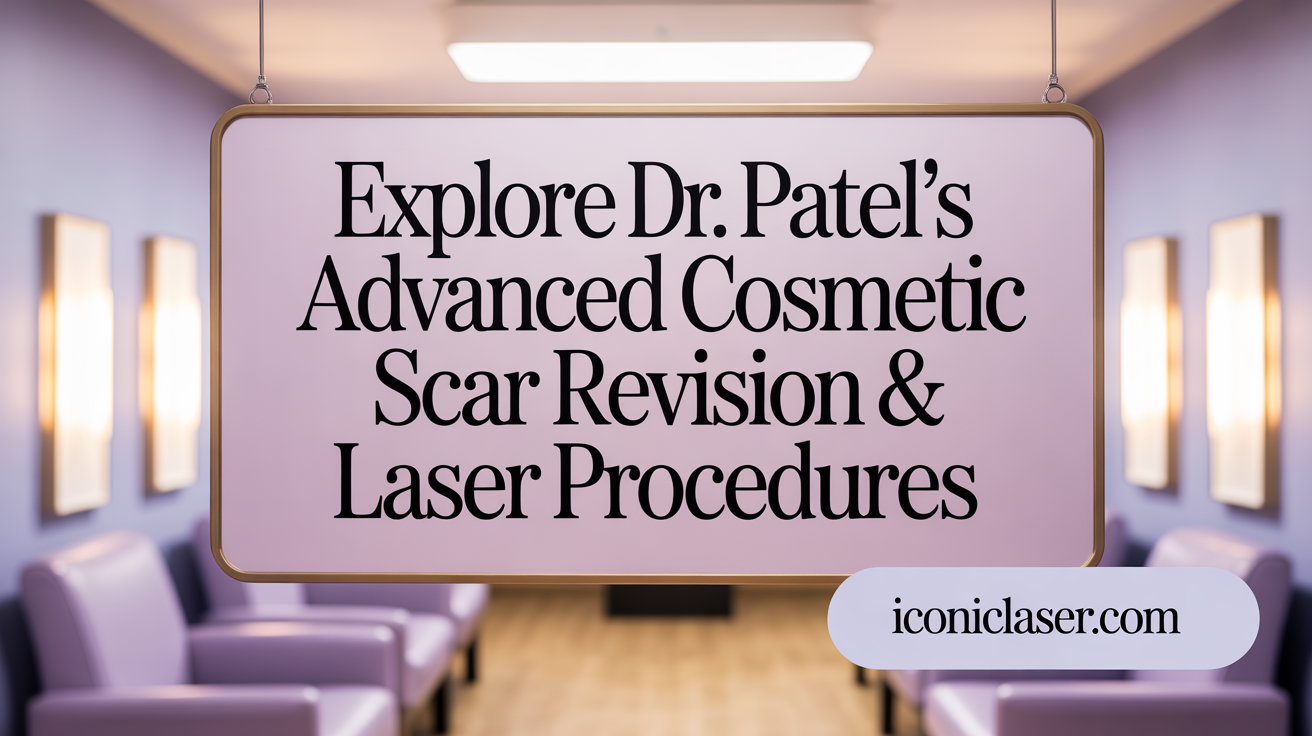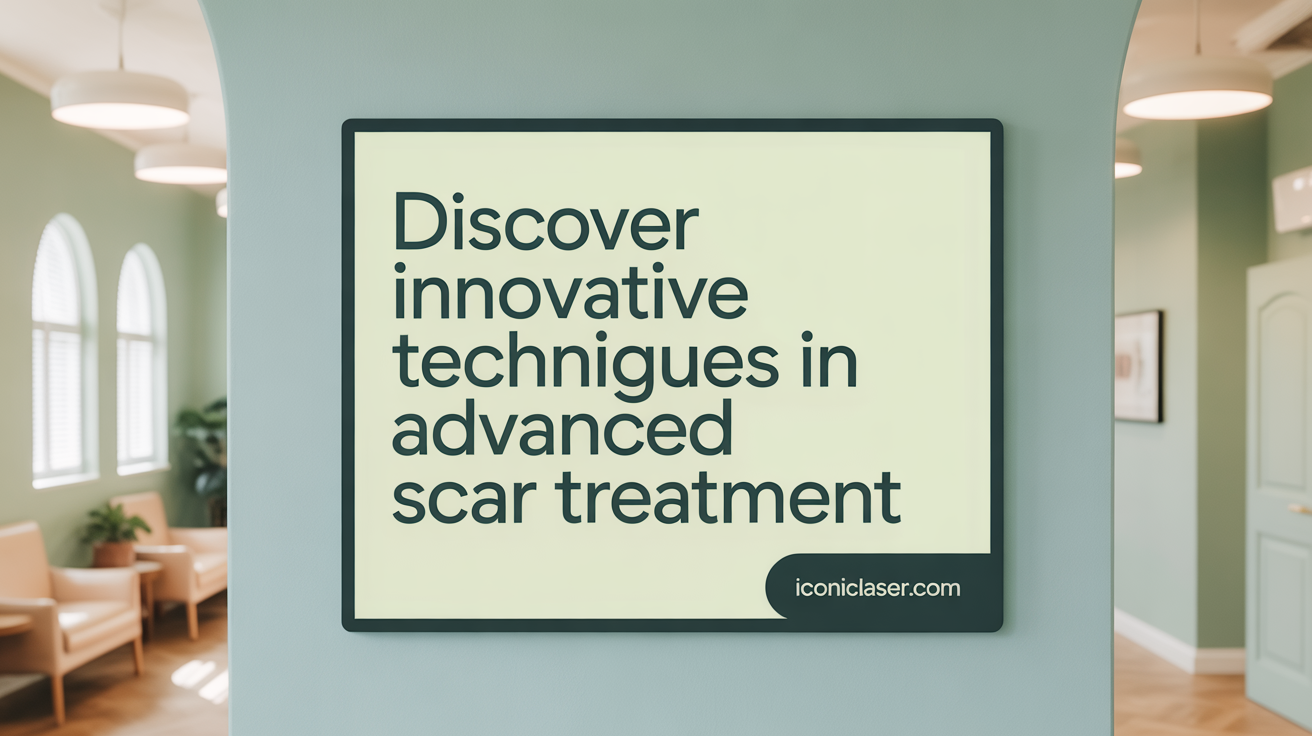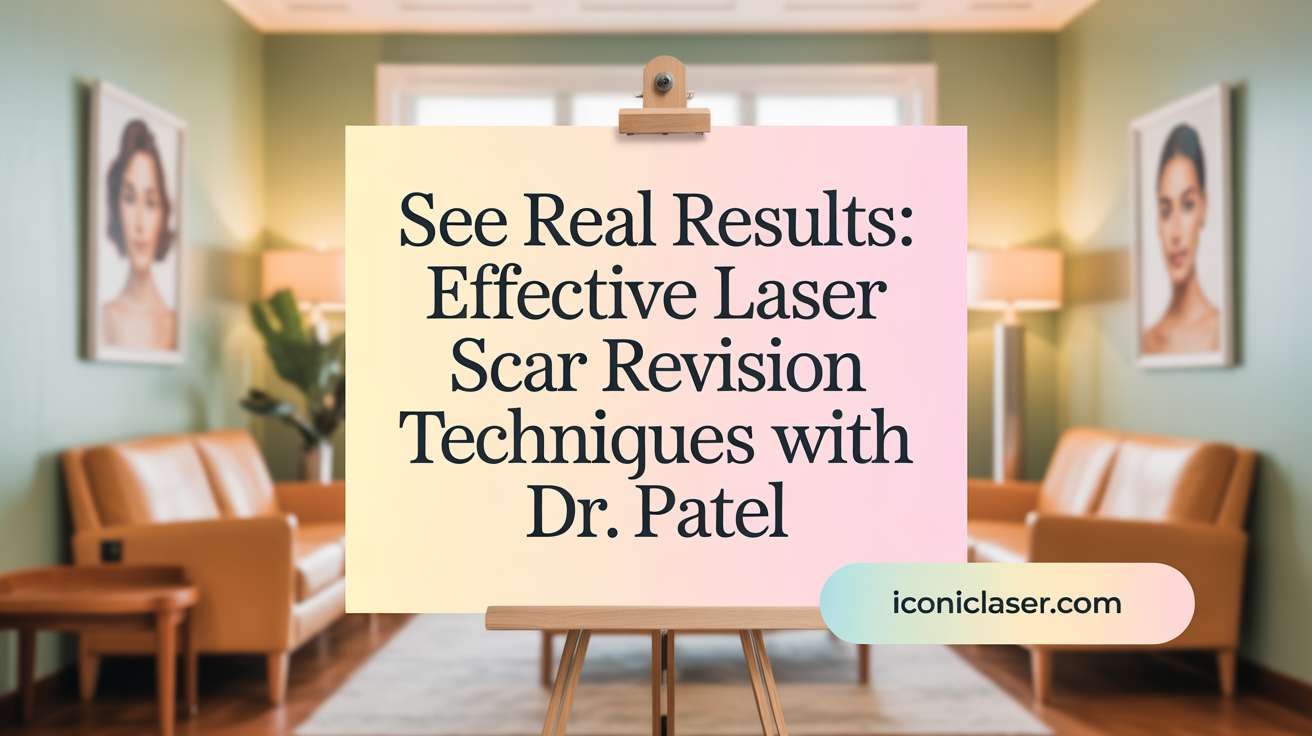Introduction to Dr. Patel's Specialty in Scar Treatment
Dr. Patel stands as a leading figure in the field of laser and scar revision, combining cutting-edge technology with a personalized approach to patient care. His expertise in utilizing advanced laser treatments and minimally invasive procedures offers transformative results for individuals seeking to improve the appearance of various scars. From surgical to acne scars, Dr. Patel's extensive qualifications and innovative methods establish him as a trusted specialist dedicated to enhancing both aesthetic outcomes and patient confidence.
Dr. Patel’s Extensive Qualifications and Expertise in Laser and Scar Revision

What are Dr. Patel's qualifications and expertise in laser and scar revision procedures?
Dr. Shaun Patel is a highly skilled physician specializing in aesthetic and laser medicine, with a strong educational background. He earned his medical degree from the University of Miami Miller School of Medicine and completed his residency at New York University. His postgraduate training includes a fellowship at Massachusetts General Hospital and Harvard Medical School, where he gained advanced expertise in laser treatments and scar management.
His professional recognition is notable, as he has been named a top injector by Galderma and serves as a national trainer for their products. Dr. Patel is also a Key Opinion Leader for Candela, a leading US-based company that manufactures aesthetic laser devices. This highlights his authority and influence in the field of laser therapy.
In addition to his clinical practice, Dr. Patel has contributed to significant research efforts, including being a primary investigator in phase 2 and phase 3 clinical trials for neuromodulators. He routinely trains other physicians in advanced techniques involving Botox, Dysport, and dermal fillers. His expertise extends across various procedures such as laser treatments, skin resurfacing, and scar revision, making him a highly qualified specialist.
In his practice at Seattle Plastic Surgery, Dr. Patel employs state-of-the-art laser technologies, including Q-Switched Nd:YAG lasers for scar resurfacing. His comprehensive approach ensures personalized treatment plans that deliver effective results while prioritizing patient safety and comfort.
Overall, Dr. Patel's combination of rigorous medical training, extensive hands-on experience, professional accolades, and ongoing research involvement affirms his standing as a distinguished expert in laser and scar revision procedures.
Comprehensive Laser and Scar Revision Treatments Offered by Dr. Patel

What specific laser and scar revision treatments does Dr. Patel offer?
Dr. Patel provides a wide array of laser options tailored to improve different types of scars, including laser resurfacing, reducing redness, and stimulating collagen growth. His practice employs fractional CO2 lasers, such as the advanced and popular Fraxel treatments (1550 and 1940), which target damaged skin layers directly to promote the growth of healthy skin and improve texture.
Additionally, Dr. Patel utilizes pulsed dye lasers (PDL) and VBeam laser treatments for reducing redness and pigmentation often associated with scars. These laser therapies are highly precise, allowing targeted treatment of superficial scars and discolored areas without damaging surrounding tissue. For acne scars and surgical scars, he often recommends multiple sessions to maximize results.
In conjunction with laser therapies, he offers several surgical and minimally invasive procedures. These include subcision—an injection technique that releases trapped scar tissue—and dermabrasion or chemical peels to resurface the skin. Punch grafting can be used for icepick scars, while injections like steroids or 5-fluorouracil (5-FU) help flatten hypertrophic and keloid scars.
Furthermore, microneedling with devices such as SkinPen is employed to stimulate the body’s natural healing process, promoting collagen formation and improving scar appearance. Treatment choices depend on the scar type, severity, and patient skin characteristics.
What additional scar revision procedures are available?
Beyond laser treatments, Dr. Patel performs traditional procedures such as scar excision and skin grafting for more severe or deep scars. He also integrates surface treatments like microdermabrasion, tailored chemical peels, and skin bleaching to enhance overall skin tone and texture.
How are personalized treatment plans created?
Every patient’s scar condition is unique, requiring a customized approach. Dr. Patel conducts thorough evaluations of the scar’s size, depth, location, and the skin's specific qualities. Based on this assessment, he develops a personalized treatment plan that may combine laser therapy with surgical and non-surgical methods for optimal outcomes. This carefully curated plan aims to minimize invasiveness while maximizing scar improvement.
Through such a comprehensive approach, Dr. Patel ensures that patients receive the most effective, tailored treatments possible, helping them achieve smoother, clearer, and more youthful skin.
Modern Technologies and Cutting-Edge Methods in Laser Scar Revision

What are the modern technologies and methods used in laser scar revision?
Laser scar revision has advanced significantly with the development of sophisticated laser systems that target scars with precision and minimal downtime. One of the highly regarded technologies is the use of fractional and ablative laser systems.
For example, the Lumenis UltraPulse with SCAAR FX™ mode employs deep ablation and coagulation, promoting collagen remodelling and improving scar structure. This laser creates tiny treatment zones that stimulate the body’s natural healing process, leading to smoother, less visible scars.
Fractional lasers, such as Fraxel 1550 and DeepFX, are designed to target deep scars specifically. They produce microscopic channels in the skin, encouraging regeneration while allowing the skin to heal quickly. This approach results in improved skin texture and elasticity with minimal discomfort and recovery time.
Non-ablative options, like ResurFX™, stimulate collagen growth without removing the outer skin surface. These treatments are often used to enhance overall skin quality and reduce redness and discoloration associated with scars.
In addition to laser treatments, other innovative methods include microneedling combined with platelet-rich plasma (PRP) therapy. This technique enhances collagen production and skin rejuvenation.
Vascular laser treatments, such as the Pulsed Dye Laser (Vbeam), are particularly effective for reducing redness and vascularity in scars, especially in hypertrophic or keloid scars.
Tailoring these treatments involves careful assessment of the scar type, depth, and skin tone. Multiple sessions are generally recommended to achieve the best aesthetic and functional results, performed by trained professionals for safety and effectiveness.
Effectiveness and Outcomes of Dr. Patel’s Laser Scar Revision Procedures
 Laser scar revision plays a significant role in improving the appearance and comfort of scars resulting from various causes, including surgery, trauma, and acne. These treatments are highly effective and have received considerable attention for their ability to enhance skin texture and color.
Laser scar revision plays a significant role in improving the appearance and comfort of scars resulting from various causes, including surgery, trauma, and acne. These treatments are highly effective and have received considerable attention for their ability to enhance skin texture and color.
The success of laser treatments largely depends on individual factors such as the type and depth of the scar, skin characteristics, and the timing of intervention. For instance, hypertrophic and keloid scars often respond well to pulsed dye lasers, which target excess blood vessels and reduce redness, thus improving the scar’s overall appearance. Fractional lasers are particularly useful for deeper scars like acne scars, promoting collagen remodeling and skin rejuvenation.
Most patients see notable improvements after several treatment sessions. Clinical studies and expert experiences suggest that laser treatments can lead to scar appearance improvements ranging from approximately 26% to over 80%. These enhancements include reduced scar thickness, normalized pigmentation, and better skin elasticity.
At Dr. Patel’s clinic, multiple sessions are typically scheduled every 6–8 weeks. This spacing allows the skin to heal and collagen to rebuild, maximizing outcomes over time. Many patients notice visible benefits after just a few treatments, although full results often require a series of sessions tailored to the scar’s characteristics.
Combining laser therapy with other modalities improves the efficacy of scar revision. For example, surface treatments like chemical peels or microdermabrasion can be used alongside laser therapy to address different aspects of scarring, such as surface roughness or pigmentation inconsistencies. Additionally, newer laser technology like Pico lasers offers precise targeting with minimal downtime, further enhancing treatment safety and patient satisfaction.
Overall, laser scar revision is a versatile and effective approach, especially when customized to the patient’s specific needs. Advances in laser technology have increased treatment safety and outcomes, making it a preferred option for many seeking scar improvement. Achieving optimal results involves proper patient selection, timing, and often a combination of treatment modalities, with ongoing research continually refining these protocols.
Real-Life Transformations: Before and After Stories from Dr. Patel’s Patients
How have patients' scars improved after treatments?
Many patients seeking scar revision have seen remarkable visual improvements following procedures performed by Dr. Patel. The results include smaller, less visible scars and smoother skin textures. Patients often notice a significant reduction in redness, the flattening of raised scars, and the narrowing of indented or discolored scars.
What do patient testimonials reveal about satisfaction?
Patients consistently express high satisfaction with their outcomes. They report boosted confidence and satisfaction with their clearer, more even skin. Testimonials highlight how minimally invasive treatments like laser resurfacing and fillers have provided noticeable results without lengthy downtime.
Are there examples involving different types of scars?
Yes, Dr. Patel has treated a variety of scars including post-surgical, traumatic, and acne scars. Surgical scars, especially those affected by prior injuries or surgeries, often show reduced prominence. Acne scars, such as icepick, boxcar, and rolling types, also respond well to laser treatments and subcision, leading to smoother skin.
Can you share success stories of laser and scar revision procedures?
Certainly. Dr. Patel has documented numerous successful before-and-after results demonstrating significant improvements in scar appearance through laser and scar revision procedures. His patients have experienced reduced redness, minimized scar size, and smoother skin textures after treatment. In testimonials and case studies, patients often note high satisfaction with the visible results achieved with fractional CO2 and pulsed dye lasers.
The images provided showcase marked reductions in scar prominence, with some patients noticing results after just a few sessions, while others see gradual improvements over several months. Overall, Dr. Patel's tailored laser treatments have consistently delivered effective, minimally invasive solutions that enhance skin quality and boost patient confidence.
Philosophy and Patient-Centered Approach in Scar Revision Care
How does Dr. Patel approach and philosophy toward patient care in scar revision treatments?
Dr. Shaun Patel’s approach to scar revision is rooted in a personalized, patient-centered philosophy that emphasizes careful assessment and tailored treatments. He considers the unique features of each scar, including its size, depth, and location, as well as individual skin characteristics, to develop an optimal plan.
He prioritizes minimally invasive procedures that target scar tissue precisely, such as laser treatments, which stimulate collagen production and remodel skin without extensive surgery. This strategy reduces patient discomfort and recovery time, making the process as comfortable as possible.
Safety and thoroughness are core principles of his philosophy. Dr. Patel conducts detailed evaluations, reviewing patient history and scar specifics, before choosing the most appropriate technology and techniques. His treatments aim not only at improving appearance but also at preserving or enhancing skin function.
Using advanced laser technologies and gentle tissue handling, he focuses on delivering natural-looking results that boost patient confidence. His goal is to provide improvements that are both functional and aesthetic, aligning with each individual’s expectations.
Overall, Dr. Patel’s care approach involves meticulous planning, the use of cutting-edge methods, and a focus on safety and satisfaction. This ensures that patients receive effective scar revision treatments that meet their specific needs and desires, ultimately achieving the best possible results.
Conclusion: Trusting Dr. Patel for Your Scar Revision Journey
Dr. Patel’s extensive training, innovative use of advanced laser technologies, and personalized patient-centered philosophy make him a distinguished specialist in laser and scar revision. His proven track record of successful outcomes and commitment to safety and natural-looking results provide patients with confidence in their treatment journey. Whether addressing acne scars, surgical scars, or complex hypertrophic scars, Dr. Patel’s expertise ensures a comprehensive approach tailored to each individual’s needs. For anyone seeking effective, minimally invasive options to enhance their skin’s appearance and restore confidence, Dr. Patel offers unparalleled care and outstanding results.
References
- Scar Revision - Nita Patel, MD
- Top Cosmetic Dermatologist in Miami, FL | Dr. Shaun Patel
- Laser Scar Resurfacing In Seattle & Tacoma
- Acne Scarring and Treatment Options Clarksville, TN
- Nima P. Patel, MD, FACS: Best Plastic Surgeon Midtown East New ...
- Plastic & Facelift Surgery Salt Lake City
- Laser Treatments for Hypertrophic Scars - Nita Patel, MD
- Scar Revision - Nita Patel, MD
